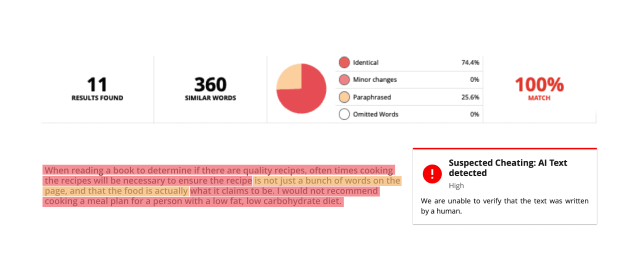SEO copywriting has become a crucial aspect of digital marketing, playing a significant role in boosting a website’s visibility and organic traffic. By crafting content specifically designed to appeal to search engines, SEO copywriters aim to improve their rankings in the search engine results pages (SERPs). Unlike traditional copywriting, SEO copywriting requires incorporating relevant keywords, key phrases, and business-related terms strategically.
This article delves into the fundamentals of SEO copywriting, exploring its strategies, techniques, and the benefits it offers to businesses. Whether you’re seeking to enhance your website’s search engine ranking or looking for ways to captivate your target audience, understanding and implementing effective SEO copywriting can be the game-changer your digital presence needs.
SEO Copywriting Strategy
Are you finding it difficult to balance SEO and content in a way that will appeal to search engine crawlers and your target audience?
In her article, content specialist Rebekah Carter elaborates on what makes a good SEO copywriting strategy.
“While most people assume that keyword research is the only important element of a good SEO copywriting strategy, there’s much more to balancing SEO and content than shoving the right words into your website copy and blog posts.
As anyone providing a good SEO copywriting service will tell you, the key to a successful strategy is finding the right balance between what the search engine crawlers need from your content and what your users need.
While copywriting is the art of using content to convince customers to convert or make a purchase, SEO is about enhancing that content to ensure that you rank as high as possible on search engine result pages.”
“Today, if you want to get the most out of your SEO copywriting campaign, then you need cohesive, well-written content that suits the machines and the audience you want to engage.
As with any other digital marketing technique, the better your strategy, the more likely you will achieve your goals. With an SEO copywriting strategy, you ensure that you’re making the right impact on all the right audiences.”
An SEO copywriting strategy is a process that helps you in creating content that increases your website’s visibility in search engines. There are many aspects of creating an effective SEO copywriting strategy, such as:
- Understanding your audience’s needs and goals.
- Learning how people search for information online.
- Creating engaging titles and meta descriptions for your pages.
- Writing keyword-rich text for each page on your website.
Content Expansion SEO
Top copywriters know how to expand and upgrade your website content and blog posts to maximize the SEO impact.
If you are unsure of how content expansion can help you grow your online traffic, here’s what Search Engine Optimization specialist James Dooley has to say about it.
Getting your pages to rank for as many different phrases relevant to the corpus it’s in is key to growing your organic traffic.
When looking to grow your traffic online, many people think Content Expansion is just adding more articles to your website.
Although adding more articles is expanding your reach for keywords to be ranking, you will be surprised by how many more phrases your existing content could start to rank for by expanding on the page level gap analysis.
The new Information Gain SEO Google Patent is a clear statement to all SEOs to provide additional value to your content that your competitors are not talking about.
There are several ways in which you can expand the content reach on your website:
- Domain Level Gap Analysis – Checking what pages your domain is missing.
- Page Level Gap Analysis – Checking what headings your page is missing.
- Heading Level Gap Analysis – Checking what phrases your header section is missing.
Content Editing SEO
When it comes to content marketing and copywriting, it pays to be specific.
One way to be specific is to combine “new” with familiar concepts, names, businesses, products, etc.
Charles Miller, Founder of Writing To Riches, gives us an excellent example:
“Familiar names create more attention and emotion than general terms.
When it makes sense, don’t write:
- Car
- Watch
- Coffee
- TV
- Fast food
Instead, write:
- Ferrari
- Rolex
- Starbucks
- Netflix
- McDonald’s”
SEO Plagiarism Checker
Any content marketer or blogger knows how important it is to have a good reputation in the industry. Yet, some of them overlook the power of SEO plagiarism checker tools.
An SEO plagiarism checker helps online content creators to avoid plagiarism and skip the risk of getting penalized by search engines for copying other people’s work;

Copyright infringement and intellectual property theft are important topics to understand and follow.
Copyleaks.com discusses these issues in greater depth:
“Content theft is a serious issue, and if you fail to deal with it, your content will get scraped away, or someone takes your credit, which you can never allow to happen for all that hard work you have put in.
With a plagiarism checker tool for SEO, you get an alert against any stealing of your research paper, case studies, marketing collateral, or any other important content.
The tool is known for offering advanced features like tracking your website for any content theft and reporting immediately for security measures, checking for SEO plagiarism and saving you from any penalties, and avoiding any damages to your website.”
Title Rewriting SEO
Title rewriting is a technique that can be used to increase the click-through rate of your content in the SERPs, also known as organic CTR. It is useful when writing for SEO purposes. It helps to make sure that your content is engaging and more likely to get more views.
You should know that Google typically displays the first 50–60 characters of a title tag.
More recently, Google started to rewrite title tags; their official blog reads:
“We consider the main visual title or headline shown on a page, content that site owners often place within H1 tags or other header tags, and large and prominent content through the use of style treatments.”
There are case studies that prove Google is doing such. Take, for example, SEO SaaS Zyppy. Their CEO, SEO consultant, Cyrus Shepard, wrote a post entitled:
“We Studied 81,000 Page Titles,and Google Rewrote 61% of Them.”
Inside you’ll gain insights on:
- How character length impacts google title rewriting.
- Does google favor [brackets] or (parentheses)?
- Which title separator does google prefer?
- Fighting google title rewrites with H1 tags.
- Tips to beat the algorithm.
Your blog post titles should draw people in, but sometimes they’re too long, generic, or don’t contain compelling keywords. Rewrite them for better SEO and more traffic.
Are you trying to rank for a specific keyword? Write targeted, informative, and keyword-optimized page titles and headings to increase your SEO score.
Optimized titles will make the search engines crawl through your pages and rank your content higher for certain phrases or topics.
Peter “Dr. Pete” Meyers, the marketing scientist for Moz, has an interesting take on the topic.
Title Rewrites: 3 Patterns to Avoid
Peter mentions three scenarios:
Scenario 1: Keyword stuffing light
Scenario 2: Superlatives
Scenario 3: Site architecture
You may want to read his full-blown post and watch the accompanying video.
Landing Page SEO
A landing page, also known as a conversion page or squeeze page, is a single web page that you use to convert site visitors into leads and customers. And since landing pages are used to generate leads and sales, they need to be optimized for conversion.
For example, if you have an e-commerce store and want to increase sales, you could create a landing page that promotes your top-selling product or service.
Or maybe you want more leads and subscribers, so you can create a landing page that offers something valuable in exchange for their contact information (e.g., an ebook).
That’s called a squeeze page.
Whatever your goal is with your landing pages, there are certain things they should all have in common:
- A clear call-to-action (CTA)
- An irresistible headline
- A compelling description of the offer
- A video demonstration or testimonial
Here are four ways you can use SEO copywriting to improve your landing pages:
1) Write with your audience in mind.
Always focus on their biggest challenges or pain points.
2) Make sure your call-to-action (CTA) calls to action customers to do something specific.
Avoid generic information at all costs.
3) Be consistent with formatting and language throughout the page.
Too many landing pages are poorly formatted and designed.
4) Use strong headers, subheadings, and bullet points
Compelling copy wins.
Bucket Brigade SEO
Do you want to read more of your website content or blog posts?
Not sure how you can turn typical ‘page skimmers’ into engaged readers?
The ‘bucket brigade’ technique can be used to improve any type of content, from landing pages and sales letters to blogs and emails.
In addition, it can help you increase dwell time, reduce bounce rates and enhance user experience while boosting your rankings on search engines.
This technique is based on the old bucket brigade, in which buckets of water are passed from person to person to put out a fire.

Source: ChristopherJanBenitez
In SEO copywriting, the virtual assistant conducts keyword research and then passes on this information to an SEO copywriter to execute the bulk of the content.
Here’s another application of this technique; the Peppercontent.io team wrote a useful post about it.
They recommend that whenever you need to transition to a vital portion of the story, introduce a new concept, or if your post is starting to lag and needs some spicing up, you use the “bucket brigade” method.
Here are some examples featured in their article:
- In other words
- Not so fast
- Meanwhile
- In my experience
- Even better
- By now
- And it doesn’t stop there
- By the way
- What does this mean for you?
- Think about it
There are hundreds of other variants you can use when applying this technique.
Storytelling SEO
Storytelling is an ancient art used for centuries to communicate with tribes and individuals. Today, it is an unfair competitive advantage, an engaging and memorable way to bond with your prospects and clients.
Storytelling SEO (also known as narrative SEO) can be a powerful tool for any business or brand that wants to stand out from the competition. This type of SEO leverages human senses, which makes your content more memorable and engaging.
A story stimulates the human senses by engaging all five of them (sight, smell, touch, taste, and sound) and our imagination through our mind’s eye.
A great story will also stimulate our emotions by creating empathy in us for its characters and setting up tension or suspense.
There are many ways to tell a story, and each one is different. It all depends on the story you want to tell and your audience’s needs.
In short, there are three types of storytelling: linear, branching, and interactive storytelling.
Linear storytelling follows a chronological order of events while branching stories have multiple possible endings depending on the choices made by the reader or player during the story.
Interactive stories mix between linear and branching elements, allowing readers to choose their own path through the narrative.
Riley Hooper, a filmmaker, and non-fiction aficionado mention in her post on Vimeo’s blog the four P’s of storytelling:
1. People:
Who is in the story?
2. Place:
Where does the story take place?
3. Plot:
What is the conflict and the journey?
4. Purpose:
Why should anyone care about this?
When done right, storytelling can help boost your website traffic, increase sales and improve brand awareness. But how do you go about using storytelling in your SEO strategy?
Here are some storytelling SEO tips:
1) Start with Research
Find out what kind of content people in your niche are creating online and what topics they’re interested in discussing. While creating something completely original is tempting, finding a unique angle is often easier when you take inspiration from what others have done before you.
2) Make it Visual
A picture is worth 1,000 words, so make sure that every piece of content you create includes one or multiple graphics (e.g., 3rd party charts, statistics, quotes, custom visuals, screenshots, etc.)
3) Create a Character Who Represents Your Brand
This character should be consistent across your marketing materials, from social media posts to print collateral. You want people who come across this character in any medium to feel like they’re interacting with that brand as a whole, rather than just one piece of it.
4) Create Videos that Tell Stories Instead of Just Showing Off What Your Company Does
This helps customers understand how your product or service will improve their lives, making them more likely to buy from you than from competitors who simply describe the features and benefits of their offerings.
Closing Thoughts
SEO copywriting is a dynamic and ever-evolving discipline that plays a pivotal role in optimizing your website’s visibility in search engines. It goes beyond keyword research, encompassing a comprehensive strategy that harmonizes the requirements of search engine crawlers and your target audience.
By understanding your audience’s needs, learning how people search for information, and creating engaging titles and meta descriptions, you can boost your website’s ranking and attract more organic traffic. Additionally, content expansion, content editing, title rewriting, landing page optimization, bucket brigade techniques, and storytelling can further enhance the impact of your SEO copywriting efforts.
Embracing these strategies allows you to connect with your audience on a deeper level, evoke emotions, and drive engagement. So, don’t underestimate the power of SEO copywriting in propelling your website to new heights. Invest in this invaluable technique, and watch as your online presence flourishes, leading to increased visibility, higher rankings, and ultimately, greater success for your business.
Ready to take your digital presence to new heights? Choose Flying V Group as your trusted partner in achieving online success. Whether you need cutting-edge web design, powerful SEO strategies, or targeted digital marketing campaigns, our team of experts is here to elevate your brand. Don’t miss out on the opportunity to soar above the competition. Contact us today and let’s embark on a journey to reach new heights together. Get in touch now and experience the Flying V Group difference!






0 Comments